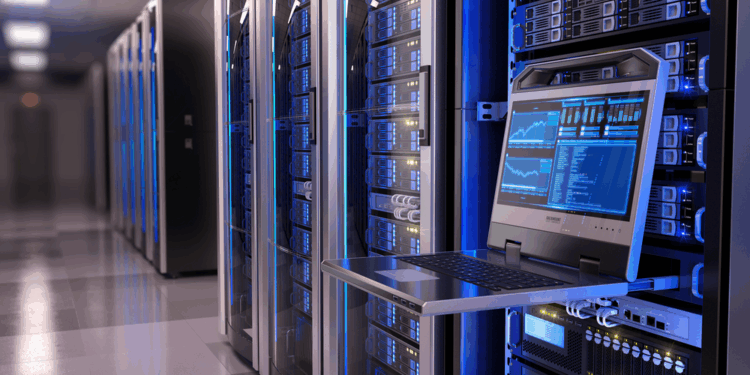In the digital era, where every second of downtime can translate to lost revenue, a server is more than just a piece of hardware—it’s the lifeblood of a business. The common misconception is that a server’s lifespan is fixed, a ticking clock that inevitably ends in a catastrophic failure. This couldn’t be further from the truth. A server’s longevity is not a matter of luck; it is a direct and measurable result of a strategic, disciplined, and proactive approach to maintenance. By investing time and effort into proper care, you can significantly extend your server’s operational life, ensuring unwavering reliability, minimizing unexpected costs, and safeguarding your most valuable digital assets.
This comprehensive guide is your definitive blueprint for maximizing a server’s lifespan. We will go beyond simple tips and delve into a holistic maintenance strategy that encompasses physical hardware care, digital software management, and long-term strategic planning. From the crucial role of environmental control to the importance of firmware updates and a robust backup strategy, every aspect of server care will be explained in detail. Our goal is to equip you with the knowledge to transform your server from a fragile asset into a resilient workhorse that will perform reliably for years to come.
The Philosophy of Proactive Server Maintenance

The foundation of a long-lasting server is a fundamental shift in perspective. You must move away from a reactive model of maintenance and embrace a proactive one.
A. Reactive Maintenance: This is the approach of fixing a problem only after it has occurred. For example, replacing a hard drive after it has failed, or troubleshooting a crash after a system has gone down. This model is inefficient, costly, and puts your data at significant risk. It leads to unscheduled downtime and a frantic scramble to restore services.
B. Proactive Maintenance: This is the strategy of preventing problems before they happen. It involves a structured schedule of tasks designed to monitor, protect, and optimize the server. By consistently performing these tasks, you can anticipate component failure, mitigate security risks, and ensure the server runs smoothly, significantly extending its operational lifespan and providing peace of mind.
The Physical Lifespan
A server is a physical machine, and just like any other machine, it requires regular physical care to function at its best.
A. Environmental Control: The Perfect Habitat:
The environment in which a server operates is a major factor in its lifespan. A server needs a space that is clean, cool, and dry.
- Temperature: Excessive heat is the number one enemy of server components. It degrades internal parts, slows down performance, and can lead to premature failure. The ideal operating temperature for a server room is typically between 65°F and 75°F (18°C to 24°C).
- Humidity: High humidity can cause condensation, leading to corrosion of electronic components. Low humidity can cause static electricity, which can also damage internal parts. Aim for a humidity level between 40% and 55%.
- Dust and Debris: Dust acts as an insulator, trapping heat and hindering the performance of cooling fans. It can also cause short circuits. Keep the server room clean and well-filtered.
B. Regular Cleaning:
Regular physical cleaning of the server is essential to prevent overheating and component failure.
- Exterior Cleaning: Use a microfiber cloth to wipe down the exterior of the server and the rack.
- Internal Dusting: Carefully open the server chassis and use a can of compressed air to blow out dust from fans, heatsinks, and vents. Hold the fan blades still while you do this to prevent them from spinning and generating a current that could damage the fan or the motherboard.
C. Power Management and Redundancy:
A server’s power source is its lifeline.
- Uninterruptible Power Supply (UPS): A UPS is a critical investment. It provides a clean, consistent power flow and offers a few minutes of battery backup in case of a power outage. This gives you enough time to safely shut down the server, preventing data corruption and hardware damage.
- Redundant Power Supplies: For a server that must run 24/7, redundant power supplies are a must. The server has two power units, and if one fails, the other instantly takes over without any interruption in service.
D. Component Monitoring and Replacement:
Proactively monitoring your server’s components allows you to predict failure before it happens.
- Hard Drives: Hard drives are the most common point of failure in a server. Use S.M.A.R.T. (Self-Monitoring, Analysis, and Reporting Technology) data to monitor the health of your drives. A healthy drive is a happy drive. In a RAID array, if a drive starts showing warning signs, replace it before it fails.
- Fans: Listen for unusual sounds from the fans. A failing fan is a major cause of overheating. Check for any fan that is not spinning and replace it immediately.
- Capacitors: On the motherboard and power supply, look for bulging or leaking capacitors, which are a common sign of a failing component.
The Digital Lifespan
A server’s hardware can be in perfect condition, but if its software is not properly managed, it is a ticking time bomb.
A. Operating System (OS) and Application Patching:
This is the single most important digital maintenance task.
- Security Patches: Hackers are constantly looking for vulnerabilities in software. Vendors regularly release security patches to fix these weaknesses. Failing to apply these patches leaves your server exposed to attacks, data breaches, and ransomware.
- Bug Fixes: Patches also include bug fixes that improve performance and stability, preventing unexpected crashes and errors.
- A Structured Schedule: Implement a clear patching schedule (e.g., once a month) to ensure that all your servers are always up-to-date.
B. Firmware Updates:
Firmware is the low-level software that controls hardware components like the BIOS, RAID controller, and Network Interface Cards (NICs).
- Performance and Stability: Firmware updates often contain performance enhancements, bug fixes, and security improvements that are crucial for a server’s long-term health.
- Compatibility: They can also provide support for new hardware, like a different type of drive or a new CPU.
C. Log File Management and Auditing:
Log files are the “black box” of your server. They record every event that happens on the system.
- Real-Time Monitoring: Use log management tools to collect and analyze logs from all your servers in a centralized location. This allows you to spot anomalies and potential security threats in real-time.
- Regular Audits: Regularly audit your logs for failed login attempts, unusual file access, or any other activity that could indicate a security breach or a looming hardware problem.
D. User and Access Management:
A server’s security is only as strong as its weakest link, which is often a user account.
- Principle of Least Privilege: Users should only have the minimum amount of access needed to perform their job.
- Regular Audits: Regularly audit user accounts to remove any old or unused accounts, and to ensure that all current accounts have the correct level of access.
The Strategic Lifespan

True server longevity is not just about daily or weekly tasks; it’s about a long-term strategic plan that anticipates future needs and potential failures.
A. A Robust Backup Strategy:
RAID is not a backup! It protects you from a drive failure, but it cannot save you from accidental deletion, a software bug, a virus, or a physical disaster. A comprehensive backup plan is your ultimate insurance policy.
- The 3-2-1 Backup Rule: The industry standard is to have 3 copies of your data, stored on 2 different media types (e.g., hard drives and cloud storage), with at least 1 copy stored offsite.
B. Hardware Refresh and Upgrade Cycle:
A server’s lifespan is finite, but you can extend it with strategic upgrades.
- Phased Upgrades: Instead of waiting for a total system failure, plan for phased upgrades. For example, you can add more RAM to a server that is running low, or upgrade your storage drives from HDDs to SSDs to boost performance.
- Predictive Replacement: Use component monitoring data to predict when a part might fail and replace it before it becomes a problem. This prevents unplanned downtime.
C. Virtualization and Containerization:
These technologies can dramatically extend the life of your physical server hardware.
- Resource Optimization: You can run multiple virtual machines (VMs) or containers on a single powerful server, consolidating workloads and making your hardware more efficient. This allows you to run newer, more demanding applications on older, but still powerful, physical hardware.
- Portability: Containers and VMs can be easily moved from one physical server to another, making a hardware upgrade or replacement a seamless process with minimal downtime.
D. Strategic Monitoring and Predictive Analytics:
Use advanced monitoring tools to collect data on your server’s performance, resource usage, and health. This data can be analyzed to identify trends and patterns.
- Predictive Analytics: By analyzing this data, you can build a predictive model that can alert you to a potential hardware failure before it happens, giving you ample time to order a replacement part and schedule a planned maintenance window.
Common Server Failure Points and How to Mitigate Them
To build a proactive maintenance plan, you need to understand the most common server failure points.
A. Hard Drive Failure: The most frequent cause of server downtime.
- Mitigation: A RAID array with hot-swappable drives is essential. This allows you to replace a failed drive without having to shut down the server. Also, as mentioned above, a comprehensive backup is your ultimate defense.
B. Power Supply Failure: A common failure point due to constant operation and potential power fluctuations.
- Mitigation: Redundant power supplies are the simplest and most effective solution.
C. Overheating: Caused by poor airflow, dust buildup, or fan failure.
- Mitigation: Regular cleaning, proper environmental control, and active monitoring of internal temperatures.
D. Software and OS Corruption: Can be caused by a software bug, a virus, or an abrupt power loss.
- Mitigation: A UPS for power outages and a regular backup schedule are your best defenses.
Conclusion
The lifespan of a server is not a matter of luck; it is a direct reflection of the care and attention it receives. The difference between a server that lasts for three years and one that runs reliably for a decade or more is a disciplined, proactive maintenance strategy. By shifting your mindset from reactive firefighting to strategic prevention, you can save your business from the catastrophic costs of downtime, data loss, and unexpected hardware failures.
The ultimate guide to server longevity is not a checklist of one-time actions, but a blueprint for a continuous, multi-layered process. It begins with the physical—ensuring your server lives in a cool, clean environment with reliable power. It continues with the digital—maintaining a strict schedule for patching, firmware updates, and log auditing. And it culminates in the strategic—implementing a robust backup plan, planning for phased hardware upgrades, and using modern technologies like virtualization to make your infrastructure more resilient and adaptable.
A well-maintained server is a testament to professionalism. It is a workhorse that operates silently, day in and day out, providing a stable foundation for your digital operations. It’s a living system that, with proper care and attention, will not only meet your needs today but will also be ready to face the challenges of tomorrow, ensuring that your investment in technology continues to pay dividends for a very long time.








